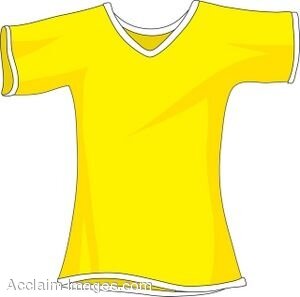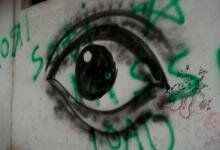Fashion for the Politically Conscious
The Red Shirts in Thailand are just the latest in a series of popular movements defined by colour.
As if travelling were not troublesome enough with the increased security checks, terrorist fears and emptying of toiletries into bottles more suited for elves, here’s the latest directive out of Thailand: colour-coordinate your wardrobe.
A tourist in Bangkok was asked, “Are you supporting the Red Shirts?”
He shook his head as he wondered if he had missed a memo from his travel agent not to wear red. He had thought it would show off his blond hair and newly tanned body against the local golden temples and sapphire waters. It would have been the perfect “Wish you were here” snide photograph to e-mail home to those in still-chilly Sweden.
Apart from this rather bizarre inconvenience, non-Thais reporting on the unrest in Thailand have largely benefitted from the colour-coding. Protesting groups are decked in different colours, depending on their political affiliations.
The Red Shirts

They laid siege on the ASEAN meeting in Pattaya earlier this month and forced the conference to be cancelled, much to the embarrassment of the government.
The Red Shirts are supporters of ousted former Prime Minister Thaksin Shinawatra, who most recently had his Thai diplomatic passport revoked and now carries an honorary passport from Nicaragua.
They want the current prime minister, Abishit, to resign and hold new elections.
Thaksin was overthrown by a military junta in 2006 but continues to garner much support, especially among the country's rural communities for his policies which helped reduce poverty. He also implemented plans extending health-care coverage to more Thais. In some areas, particularly in the north, his picture is often hung next to the King’s, the most revered figure in Thailand.
The Yellow Shirts

Traditionally yellow is worn among Thais as a mark of respect for the King. Every Monday – the day King Bhumibol Adulyadej was born – school students, office workers and government employees can be seen donning yellow.
The colour was also worn by protesters who staked out Parliament House last September, demonstrating against a pro-Thaksin government. The movement is an extra-parliamentary group comprising royalists, academics, former military people and Bangkok's middle classes, and calls itself the People's Alliance for Democracy (PAD). Their current leader is Sondhi Limthongkul, who survived a shooting in his car last week in the Thai capital.
The Yellow Shirts kept the Thai capital in jitters and their sit-in forced the closure of Bangkok's airports last November, leaving 250,000 foreigners stranded.
The Dark Blue Shirts

The phrase “Protect the Institution” was emblazoned across their dark blue T-shirts. They clashed with the Red Shirts in Pattaya, bearing clubs and iron rods.
Their precise motives and affiliation are being disputed. The Red Shirts say they are pro-government militia. The government denies it.
*Thailand is not the first country to have seen colour-coded popular movements.
The Brown Revolution marked the rise to power in Germany of the Nazis on in January 1933. Also known as the Machtergreifung, or the “Seizure of Power”.
In 1963, the Shah of Iran instituted the White Revolution. After a particularly repressive decade during which he removed the popular nationalistic Prime Minister Mohammad Mosaddeq and replaced him with a couple of his own loyalists, the Shah implemented a series of populist reforms.
Calling it the White Revolution, they included:
- land reform
- profit-sharing for industrial workers in private sector enterprises
- nationalization of forests and pastureland
- sale of government factories to finance land reform
- amendment of the electoral law to give more representation on supervisory councils to workers and farmers
- establishment of a Literacy Corps to allow young men to satisfy their military service requirement by working as village literacy teachers
In 2003, the Rose Revolution in Georgia led to the ouster of President Eduard Shevardnadze amidst charges of corruption and cronyism.
Electoral fraud and voter disenchantment erupted into the Orange Revolution, a massive popular uprising following Ukraine's parliamentary polls. Sit-ins and strikes paralysed cities across the country and eventually led to a re-vote mandated by the Supreme Court.
The Pink Revolution is named for the overthrow the government of Kyrgystan's President Askar Akayev in the parliamentary elections of February 27 and March 13, 2005.


















